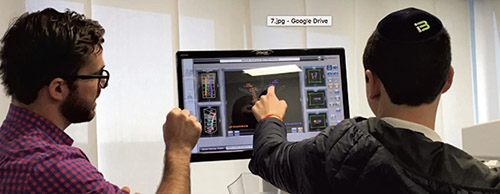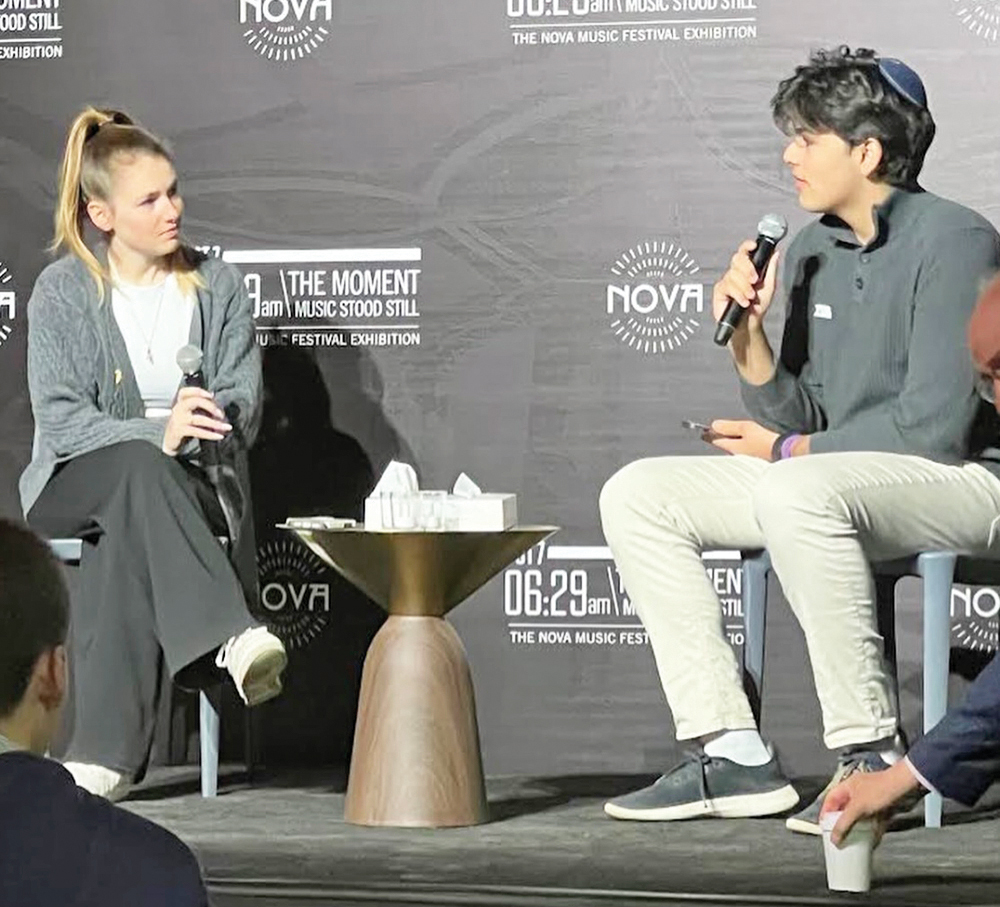


Students enrolled in the elective engineering course at The Frisch School are engaged in a rigorous curriculum offering laboratory and project-based experiences as well as the foundations of engineering design. Engineering Chair Rifkie Silverman, herself an electrical engineer, has been teaching math and science at The Frisch School since 1999. Six years ago Frisch piloted an engineering program with 18 students that has now expanded to a four-year curriculum including computer science and robotics, with more than 150 students currently enrolled.
“During the second year of the curriculum, students in 10th grade learn the foundations of bioengineering as they investigate various biological systems, their functions and purpose. Students study biomechanics, measure and design diagnostic models and ultimately apply their knowledge to develop a bioengineering project with a working prototype that utilizes advanced electronic hardware,” explained Silverman. The current 10th graders just completed a unit on biomedical engineering during which they researched innovative technologies that alter the way we diagnose and treat various diseases. These students were graciously invited to visit The Center for Musculoskeletal Disorders where they were able to preview the Mazor Robotics Renaissance Guidance System.
Seventeen students were welcomed by Dr. Jonathan Lewin, who offered a brief introduction to the world of spine surgery. Lewin explained the advantages of biomedicine and technology merging together, resulting in greater accuracy and efficiency. “It is the blending of these two components that have enabled Mazor Robotics, an Israeli-based technology corporation, to create a platform that achieves far better precision during surgical procedures.”
The Mazor Robot gathers data in advance, enabling the surgeon to plan a procedure in the office prior to execution. This in turn greatly reduces risk and eliminates the margin for manual error. For both surgeon and patient alike, the ability to enter the operating room with advanced data only improves the success of the outcome. “The genius is the marriage of your pre-operative study to the intra-operative data,” explained Dr. Lewin. This technology takes the guesswork out of the process by allowing surgeons to see what they could not beforehand. “The Robotic Platform enables surgeons to make a visual blueprint prior to surgery. This minimizes the need for a larger incision as well as the stripping of healthy tissue in order to identify the problem,” noted Dr. Lewin.
Students were given an opportunity to actually test the software. The software explains where to place the Robot in relation to the patient’s spine. Mazor Robotics representatives explained how the Robot allows the surgeon to find the perfect angle to insert a spinal screw. They then allowed a few brave students to attempt the procedure, all passing with flying colors. “The trip to see the Mazor Robot at the Center for Musculoskeletal Disorders was really unique. It gave us the chance to learn about the newest technology and how it is affecting the world today,” commented Frisch student Sarah Frost. “At the Center for Musculoskeletal Disorders, the Mazor Robot is used to plan where to place screws in peoples’ spines and how to add those screws. The demonstration of how the Mazor Robot works was the most interesting part of the visit because it was a way of showing us how the technology is improving. After using the program to plan where to place the screws, they then showed us what the actual surgery would look like using real tools,” Frost added. “Being able to watch the demonstrations of what an average day in their life is like was really cool. It showed me the importance of the Mazor Robot in reducing the chance of harm being done to the patient by helping the surgeon be more precise.”
Frisch student Addison Hartman feels this trip was an excellent hands-on learning experience. “At The Center for Musculoskeletal Disorders we learned about the engineering behind the Mazor Robot and how the technology works. I personally was able to act out the exact steps a surgeon would do to perform his own surgery. This was meaningful to me because we see that in the 21st century, technology has advanced so much that placing a screw to potentially cure someone’s spinal cord damage is not just a guess like it was in the past, but rather this robot allows surgeons to know the exact place where the screw has to go. I think this was an important trip for Frisch to take us on because it shows us what our projects could potentially do in the future to change procedures forever,” expressed Hartman.
Currently this platform of robotics is only available in 75 sites in the United States, most of which are hospitals. The Center for Musculoskeletal Disorders together with Mazor Robotics is committed to educating physicians and students in this technology. “This is a trajectory-based system which offers a pre-operative analytical process,” articulated Dr. Grossman, a spine surgeon at The Center for Musculoskeletal Disorders. Additionally, Grossman explained how this method is an ultimate win for both patient and physician, allowing the doctor to be more prepared and the patient to sustain an even better outcome.
With robotic technology at the forefront of the medical field, the students were excited to visualize an actual working prototype created with fundamentals they have learned thus far in their curriculum. While this type of technology is quite costly, the feeling is that it is a worthwhile investment when considering the improvement in accuracy for procedures such as the spine surgeries discussed. With continuous advancements in biomedical technology changing the standard of healthcare, there is no doubt that developments such as the Mazor Robot will become more widespread in the near future. These Frisch students believe that through their studies and efforts, one day they too can make a difference in medical advancement.
By Andrea Nissel













